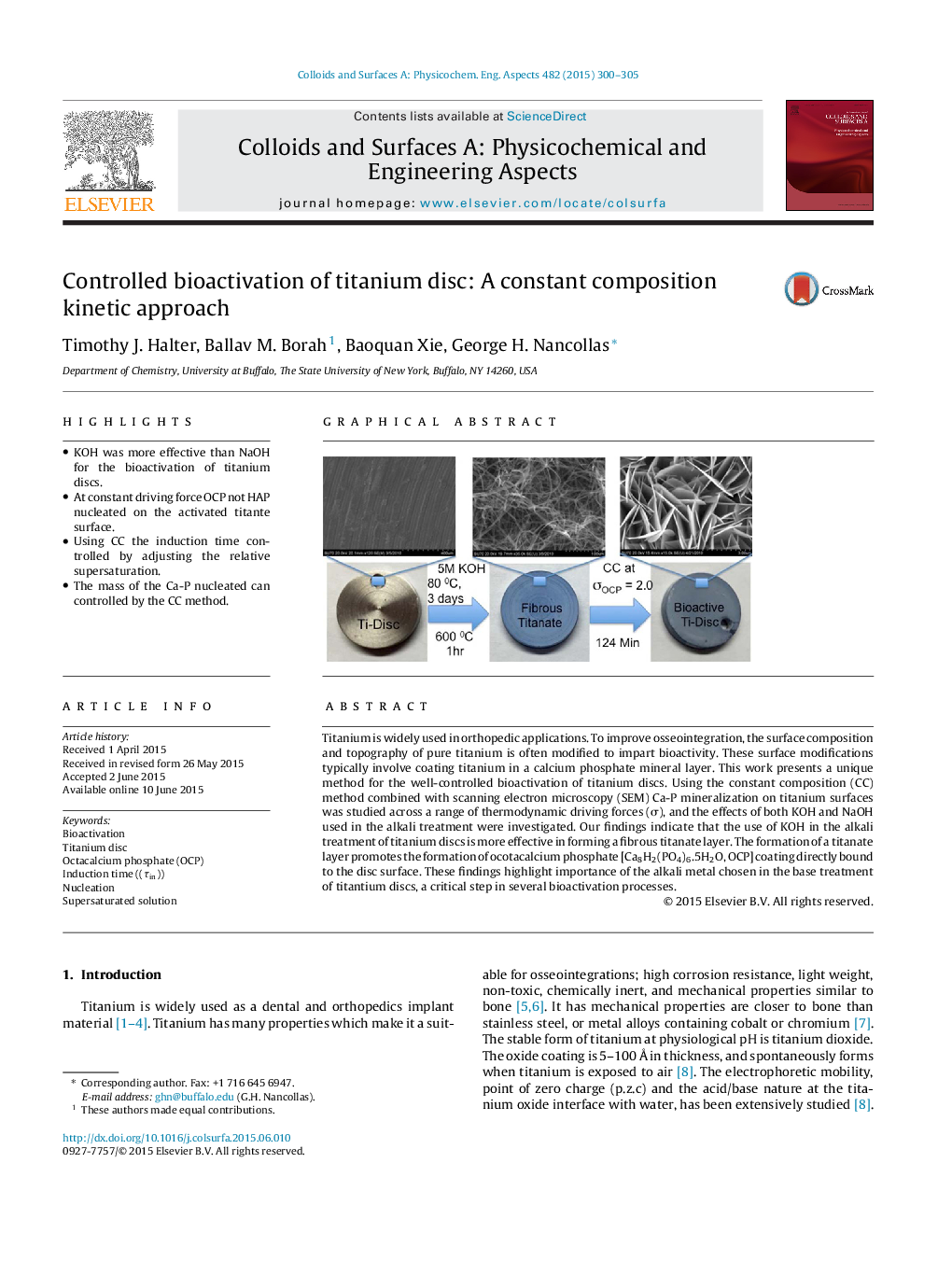| Article ID | Journal | Published Year | Pages | File Type |
|---|---|---|---|---|
| 592071 | Colloids and Surfaces A: Physicochemical and Engineering Aspects | 2015 | 6 Pages |
•KOH was more effective than NaOH for the bioactivation of titanium discs.•At constant driving force OCP not HAP nucleated on the activated titante surface.•Using CC the induction time controlled by adjusting the relative supersaturation.•The mass of the Ca-P nucleated can controlled by the CC method.
Titanium is widely used in orthopedic applications. To improve osseointegration, the surface composition and topography of pure titanium is often modified to impart bioactivity. These surface modifications typically involve coating titanium in a calcium phosphate mineral layer. This work presents a unique method for the well-controlled bioactivation of titanium discs. Using the constant composition (CC) method combined with scanning electron microscopy (SEM) Ca-P mineralization on titanium surfaces was studied across a range of thermodynamic driving forces (σ), and the effects of both KOH and NaOH used in the alkali treatment were investigated. Our findings indicate that the use of KOH in the alkali treatment of titanium discs is more effective in forming a fibrous titanate layer. The formation of a titanate layer promotes the formation of ocotacalcium phosphate [Ca8H2(PO4)6.5H2O, OCP] coating directly bound to the disc surface. These findings highlight importance of the alkali metal chosen in the base treatment of titantium discs, a critical step in several bioactivation processes.
Graphical abstractFigure optionsDownload full-size imageDownload as PowerPoint slide
